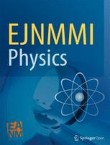2022 Citation Impact
4.0 - 2-year Impact Factor
3.9 - 5-year Impact Factor
1.429 - SNIP (Source Normalized Impact per Paper)
1.174 - SJR (SCImago Journal Rank)
2023 Speed
23 days submission to first editorial decision for all manuscripts (Median)
149 days submission to accept (Median)
2023 Usage
449,199 downloads
94 Altmetric mentions
